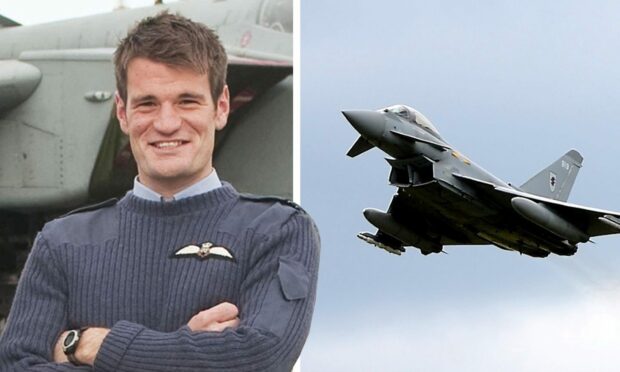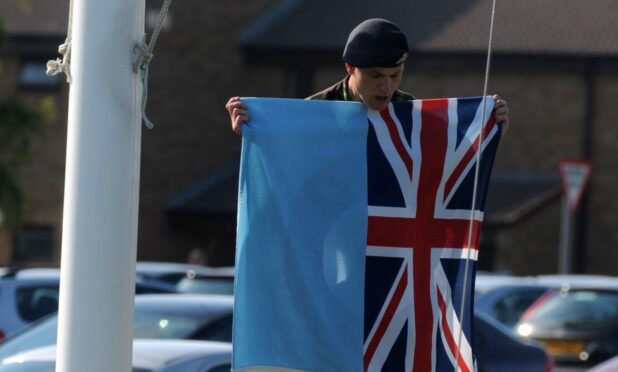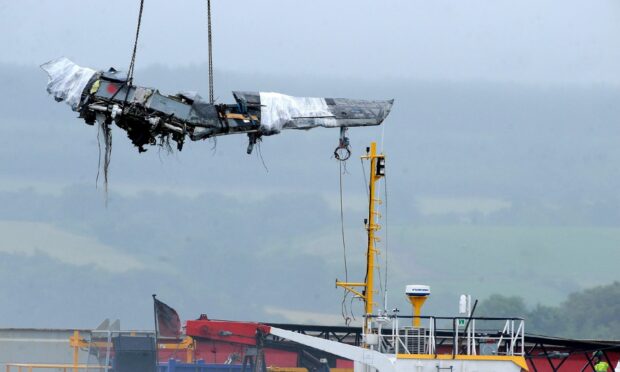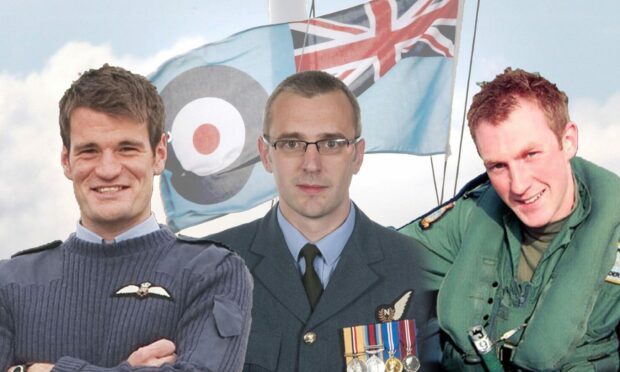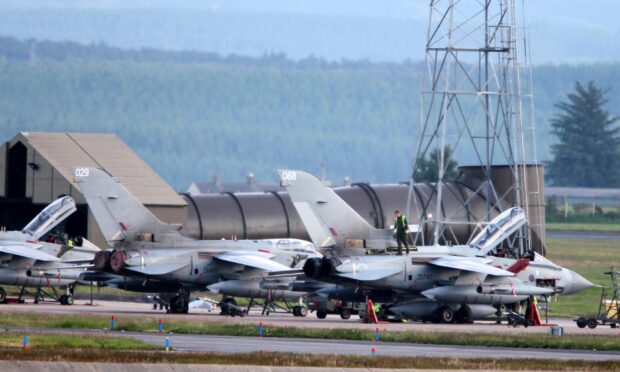A father whose son died 10 years ago this week in a mid-air Tornado collision over the Moray Firth has condemned military chiefs for continued failure to fit anti-crash technology on all RAF fast jets.
Michael Poole branded it “incomprehensible” that the Ministry of Defence has still not installed collision warning systems in the aircraft which succeeded Tornado.
He fears others could suffer the pain faced by his family as a result of the failure to learn lessons from the crash which killed his son, Flight Lieutenant Hywel Poole.
Squadron Leader Sam Bailey and Flt Lt Adam Sanders also died in the tragedy, while a fourth airman was injured.
Losing Hywel left a huge hole in my heart that will never close.
– Michael Poole
The lives of the RAF Lossiemouth-based crew will be remembered on the 10th anniversary of the collision on Sunday July 3.
Mr Poole described his son, who was from Wales and 28 when he died, as a “kind, intelligent, caring and a talented pilot”, who was tipped to rise to a high rank in the RAF.
“Losing Hywel left a huge hole in my heart that will never close,” he told us ahead of the anniversary.
“What makes it even harder to bear is that the accident might have been prevented if a collision warning system had been installed on the Tornado GR4.”
Mr Poole added: “We were told that all lessons would be learned following the accident and action would be taken, but unfortunately this has not been the case regarding collision warning systems.”
What happened on July 3, 2012?
The two Tornado jets collided in bad weather on July 3, 2012, about seven nautical miles south-east of Helmsdale.
An inquiry found 17 contributory factors led to the collision, including the failure to fit a collision warning system in the aircraft.
Investigators found that such a system could have saved the lives of the crews by giving them an extra 39 seconds to respond with emergency action to avoid colliding.
Mr Poole said: “The Military Aviation Authority service inquiry into the accident found that there were many factors that combined to result in the collision, but to my mind the absence of a collig system was the most important.”
Delays and cancellations
Plans to use the technology in Torando jets dated back to 1998, but the programme was controversially hit by a series of delays, cancellations and deferments.
The RAF withdrew the Tornado aircraft from service in 2019 and replaced them with Typhoon and F-35 jets.
RAF Lossiemouth is currently home to four Typhoon squadrons.
Air Marshal Richard Garwood, who was Military Aviation Authority director general at the time, said failing to fit warning systems in the Typhoon and F-35 jets was an “unsustainable position”.
In 2015, the RAF was again told by the authority to fit a warning system on Typhoon with “full haste”.
Still no collision warning system
A decade after the Tornado collision, the technology has still not been rolled out to the current generation of RAF fast jets.
The Ministry of Defence said earlier this year that tests were being carried out on an “enhanced collision awareness system” for Typhoon.
Mr Poole said he had recently been informed by the military that the Typhoons currently in operation were not due to be fitted with a collision warning system until next year.
He added that the F-35 Lightning does not have a warning system, and neither does the Hawk that is used to train fast jet pilots.
‘Standard in cars’
“In an era where many cars on the road are fitted with collision warning systems as standard it is incomprehensible to me that the MoD finds it acceptable to send young men and women flying fast jets at hundreds of miles an hour without safety technology that could save lives,” he said.
“It is impossible to be certain that it would have prevented the accident on 3rd July 2012, but it is very possible that it would have.
“I just hope that no other family ever has to go through the pain that my family has suffered, but I fear that it could happen again if all possible safety equipment is not fitted to all military fast jets.”
Retired RAF officer Jimmy Jones has led a long campaign for a fatal accident inquiry (FAI) into the 2012 tragedy, helping to secure a change in the law to ensure such a probe is now mandatory for military deaths in Scotland.
However, the law has not been applied retrospectively to historic deaths.
Last year, Mr Poole wrote to Scotland’s recently-appointed lord advocate, Dorothy Bain QC, to give his backing to the calls for an FAI into the Tornado collision.
But in February this year, Ms Bain became the third lord advocate to rule out a new investigation.
RAF says safety is top priority
An RAF spokesman said: “Our thoughts remain with Hywel’s family and friends on the 10th anniversary of his tragic death.
“Safety remains our number one priority. Our F-35s are equipped with advanced situational awareness systems which allows them to operate safely and we are currently trialling a collision awareness system on our Typhoons.”
It is understood the UK is working with the US to develop an automated “air collision avoidance system” for the F-35, which already has “advanced situational awareness”.
